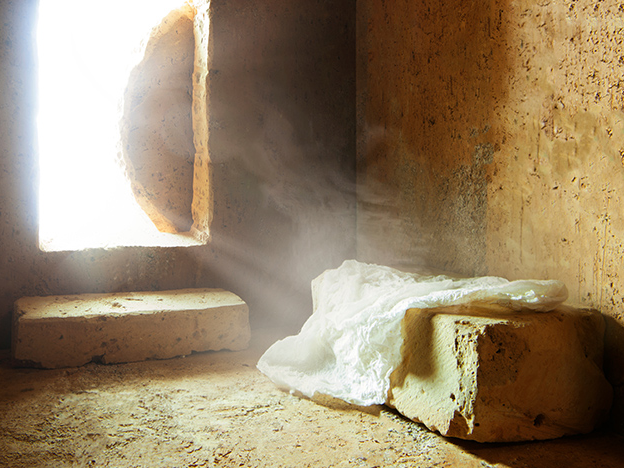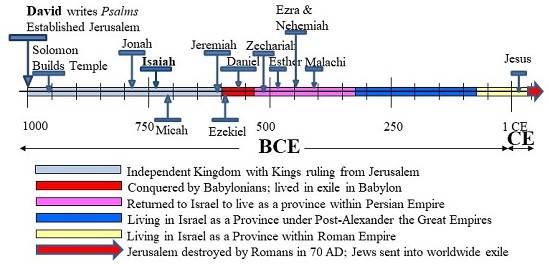The serpent or Naga has deeply entrenched itself in Asian folklore, art and mythology. It rivals the dragon which shares many similarities with the serpent in mythology. Both Asian mythology as well as the Hebrew Scriptures group the naga and the dragon together. The Hebrew scriptures also records a confrontation between the serpent/dragon and the Creator God at the dawn of human history. We look at all this here and how this has affected history and our lives today.
Nagas and Dragons Portrayed in Asia
The various Asian countries portray Nagas or serpents differently, but they are always described and depicted as powerful and clever. Nagas are associated with water and traditionally believed to live in underground caverns or holes. Because of this role, they are connected to the underworld (Patala or Naga-loka). Buddhist mythology consigns nagas to Naga-loka because Śakra (Sanskrit: शक्र; Pali: सक्क), the ruler of the Trāyastriṃśa Heaven, defeated them.

Pawyilee, Public domain, via Wikimedia Commons
Within the Buddhist tradition, Mucalinda is the most important naga. He once protected the Buddha from the elements during a heavy storm while the Buddha meditated. Asian art depicts nagas as serpentine, often with multiple heads, or as half human and half serpent.
Like Nagas, dragons are associated with water. Asian art commonly depicts dragons having a long, curly, and serpent-like body with four legs. The dragon is also a symbol of power, strength, and good luck for people who are worthy of it. The discovery of the Yangshao dragon statue proves that dragons in Asian culture date back several thousands years.

The Naga-Dragon in the Bible
The ancient Hebrew Scriptures records the encounter between the adversary of the Creator God and the first humans. In this encounter the spirit possessed a serpent and tempted the humans to disobey the Creator God, so he brought about their corruption from their Image of God. From then on the Bible links the Devil with both serpent (naga) and dragon.
9 The great dragon was hurled down—that ancient serpent called the devil, or Satan, who leads the whole world astray. He was hurled to the earth, and his angels with him.
Revelation 12:9
The Promise of Vimukti in the Garden
In the confrontation where the Creator God sets up a cycle of impermanence, he then confronts the serpent. The Bible records it as follows:
14 So the Lord God said to the serpent, “Because you have done this,
“Cursed are you above all livestock
Genesis 3:14-15
and all wild animals!
You will crawl on your belly
and you will eat dust
all the days of your life.
15 And I will put enmity
between you and the woman,
and between your offspring and hers;
he will crush your head,
and you will strike his heel.”
First the Creator God curses the animal itself (verse 14). This suggests the relationship between the serpent and dragon in Asian iconography with dragons depicted as serpents with small legs.
The Characters and Their Relationships of the Great Riddle
In verse 15 The Creator God sets out a riddle against the devil, the great spirit possessing the serpent. We can understand this riddle if we simply go through it step-by-step.
You may observe that the riddle mentions five different characters. Also note that it looks forward in time (with the repeated use of future tense ‘will’), and therefore is prophetic. The characters are:
- ‘I’ = The Creator God (since He is speaking)
- ‘you’ = Serpent (Devil) (since God speaks to him)
- ‘the woman’
- ‘your offspring’ = The offspring of the Serpent
- ‘hers’ = The offspring of the woman
The riddle also predicts how these characters will relate to each other in the future. There will be ‘enmity’ between the woman and the serpent and between their respective offspring. There will be an exchange between the Serpent and the offspring of the woman. The serpent will ‘strike the heel’ of the woman’s offspring while he will crush the head of the serpent. The diagram below shows these relationships:

Deductions on the Offspring – A ‘He’
So far we have just made observations directly from the text. Now for some reasoned deductions. Notice how God refers to the offspring of the woman:
15 “And I will put enmity between you and the woman and between your offspring and hers; he will crush your head and you will strike his heel.”
Genesis 3:15
Because the riddle refers to the woman’s ‘offspring’ as a ‘he’ and a ‘his’, we know that this offspring is a single male human. It refers to a man. With that we can discard some possible interpretations.
As a ‘he’, the offspring is not a ‘she’ and thus cannot be a woman.
As a ‘he’, the offspring is not a ‘they’. This rules out a group of people, or a race, or a team, or a nation. At various times and in various ways people have thought that a ‘they’ would solve the duhkha curse. But the offspring, being a ‘he’, is not a group of people, whether a nation, or those of a certain religion, such as Hindus, Buddhists, Christians, or Muslims.
As a ‘he’, the offspring is not an ‘it’. Rather the offspring is a person.
Implications of ‘He’
Think for a moment about the implications. Throughout history the brightest, smartest and wisest people have been developing new philosophies, political systems, economic models, and advanced technologies. Think about the development of monetary systems, the new technologies developed in the last two hundred years, medical breakthroughs, and the advance of democracy. All these, good and welcome though they might be, are various forms of ‘it’. The brightest of human minds have almost always searched for a newer and better ‘it’ to help the human situation. The insights and teachings of Gautama Buddha, are part of this vast contribution.
But here this Promise is looking in a totally different direction. It is not anticipating a better ‘it’, but rather a ‘he’. This ‘he’ will in some way carry the struggle with the serpent who unleashed the kleshas into the world.

This eliminates the possibility that the offspring is a particular philosophy, teaching, technology, political system, or religion. An ‘it’ of these kinds would probably have been, and still is, our preferred choice to fix the world. We think that what will fix our situation is some kind of ‘it’. So the best of human thinkers through the centuries have argued for different political systems, educational systems, technologies, religions, etc. But this Promise points in a totally different direction. God had something else in mind – a ‘he’. And this ‘he’ would crush the head of the serpent.
The Woman and the ‘He’
Notice what God does not say. The Creator God does not promise that the ‘he’ will come from a man and a woman. Nor does He promise that man will have an offspring. The riddle simply promises that the woman will have an offspring, a ‘he’. God states this without indicating that a man will play a part in producing the offspring. This is quite extraordinary especially given the emphasis of sons coming only through fathers in the ancient world. But in this case, there is no promise of an offspring (a ‘he’) coming from a man. It says only that there will be an offspring coming from the woman, without mentioning a man.
Out of all the humans that have ever lived, historically or mythically, for only one has even a claim been put forth to have had a mother but without a physical father. This was Jesus Christ, who the New Testament (written thousands of years later) declares was born of a virgin, thus having a mother but no human father. Is the riddle foreshadowing Jesus here, at the beginning of history? This fits with the observation that the offspring is a ‘he’, not a ‘she’, ‘they’ or ‘it’. With that perspective, some pieces of the riddle fall into place.
‘Strike His Heel’??
What does it mean that the Serpent would ‘strike his heel’? When I worked in the jungles of Africa we had to wear thick rubber boots, even in the humid heat. Otherwise the serpents lying in the long grass would strike our foot – heel – to kill. My first day there I almost stepped on a serpent, and possibly could have died from it. The riddle made sense to me after that. The coming ‘he’ would destroy the serpent (‘crush your head’), but the price he would pay for that would be his life (‘strike his heel’). That does foreshadow the way Jesus achieved victory in his sacrificial death because he rose from death afterwards.

The Offspring of the Serpent?
But what about his other enemy, this offspring of Satan? Though we do not have space to trace it out exhaustively, later books in the Bible foretell a coming person. Note this description:
1 Concerning the coming of our Lord Jesus Christ and our being gathered to him, we ask you, brothers and sisters…
3 Don’t let anyone deceive you in any way, for that day will not come until the rebellion occurs and the man of lawlessness is revealed, the man doomed to destruction. 4 He will oppose and will exalt himself over everything that is called God or is worshiped, so that he sets himself up in God’s temple, proclaiming himself to be God.
2 Thessalonians 2:1, 3-4; written by Paul in Greece ca 50 CE
These later books describe a countdown to a clash between the offspring of the woman and Satan’s offspring. But it is first mentioned in embryo-like form in this riddle, at the very beginning of human history. Later prophecies will fill in further details. So the climax of history, the countdown to a final contest between Satan and God, is foreseen from earliest time in this riddle.
The Remarkable Bible Library
To appreciate the significance of this Promise we must know some basic facts about the Bible. Though we think of the Bible as a book it is more accurately viewed as a mobile library. This is because the Bible comprises a collection of books written by a diverse group of authors over 1500 years. Today these books are bound into one volume – the Bible. These different books of the Bible make statements, declarations and prophecies that later books follow-up with.

Signalling a Divine Message
If just one sage, or group of sages that knew each other, wrote the books of the Bible, that would make it unremarkable. But history separates the Bible’s writers by hundreds and even thousands of years. They wrote in different civilizations, languages, social strata, and literary genres. Yet their messages and prophecies are consistently developed further by later sages. As well, ancient prophecies are fulfilled through facts of history verifiable outside the Bible. We see this in the Riddle of the Woman’s Seed that reaches its fulfillment in Jesus thousands of years later.
This makes the Bible unique on a transcendent level. How can humans coordinate their messages over hundreds of years and accurately predict events occurring lifespans later? The writers claim that they could do so because the Creator God inspired their writings. Our ability to verify their prophecies historically allows us to judge whether the Creator really speaks to us through them.
So we continue investigating the Biblical story to understand its purpose for us as well as to check its credibility. Check here for an introduction to the Bible’s reliability as well as here for its application to the Old Testament. Here we look at historical evidence in Chinese script for the existence of Adam. Otherwise, we look at the next mercy extended to the first humans. We take it for granted today but it affects us all everyday – the wearing of clothes.